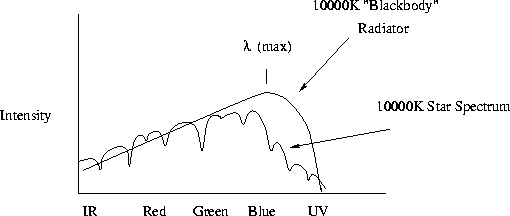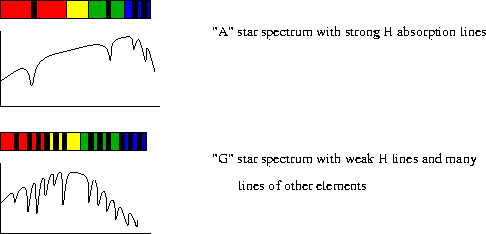- Ultra-cheap trick: "Say, that star looks a little bit redder than the Sun so
its surface temperature must be less than 5800K"
- Cheap Trick: Disperse the light from a star ("take a spectrum"),
find the wavelength at which you have the most radiation, then apply Wien's Law.
Wien's Law lets us quantify the color-temperature relationship
but Wien's Law gives temperatures for objects with Planck-like spectra.
Stars don't quite have Planck spectra because of the absorption lines,
flux redistribution and other complications like that.

- One of the two ways it is really done - measure colors:
The basic idea - for Planck spectra (from solid objects), the ratio of
the light in two different color filters unambiguously gives the
temperature of the objects.
The relationship between color and surface temperature is just a little
more complicated however and needs to be calibrated using computer models.

Cooler objects will have redder colors. So, at the crudest level we can simply sort them out by color with the red stars being the coolest and the blue stars being the hottest. To the extent that Stellar spectra look like blackbodies, the temperature of a star can also be measured amazingly accurately by recording the brightness in two different filters.
To get a stellar temperature:
- Measure the brightness of a star through two filters and compare
the ratio of red to blue light.
- Compare to the spectra of computer models of stellar spectra of different temperature and develop an accurate color-temperature relation.
- Measure the brightness of a star through two filters and compare
the ratio of red to blue light.

